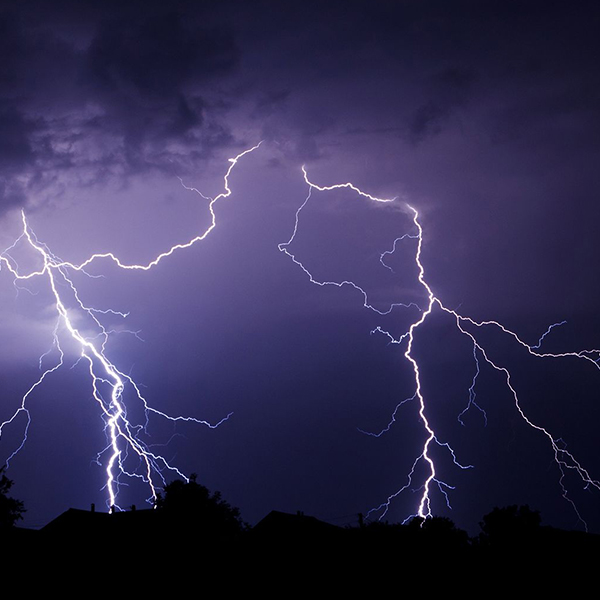Lightning is more than a bolt from the blue. In Ghana and across Africa, it can be a moment of tragedy, mystery, fear — and reflection on how we understand nature, faith, and culture.
A Life Lost at Dodi-Papase — Between Nature and Spirit
On October 17, 2025, a tragedy struck in the Dodi-Papase area of Kadjebi District, Oti Region, when 19-year-old Justice Berina Komla was struck and killed by lightning while uprooting palm trees on farmland. Adomonline.com+1
Eyewitnesses described a thunderclap so loud and sudden that those nearby rushed to find him motionless on the ground. His body remained at the scene for hours, as local custom demanded ritual clearance before removal. Adomonline.com
Within the community, suspicion also emerged: some claimed Justice might have stolen something from someone, and that a powerful local deity — Zakadza, a thunder god revered in parts of Volta and Oti Regions — was invoked to strike him as punishment. Modern Ghana+1
This account shows how, in many Ghanaian rural settings, a lightning strike isn’t simply physical — it carries spiritual weight, suspicion, ritual, and social meaning in a way that sometimes complicates rescue, investigation, or even mourning.
Other Stories from Around the World: Survival, Mystery & Miracles
Stories of lightning are dramatic worldwide — some tragic, others miraculous.
-
In France, a lightning bolt struck 14 people attending a concert in 2017. No one died, but the survivors — called “fulgurés” — shared long-term aftereffects: fatigue, memory loss, neurological pain, and a sense they had become different people. Le Monde.fr+1
-
In Ghana, Raphaëlle Manceau, a French teacher, was struck during a festival. She described intense changes in memory, chronic pain, personality shifts, and a long process of rebuilding her life — a haunting reminder that even “survival” doesn’t mean “normal.” Le Monde.fr
-
In Uganda, a lightning strike hit a church service in a refugee camp, killing 14 people and injuring dozens more. The worshippers were under a metallic structure when the bolt struck — showing how vulnerability is sometimes built into the spaces where we gather. AP News
-
In South Africa, it was the death of a 6-year-old boy struck while his family sheltered indoors; the lightning caused structural damage that led to his fatal injury. IOL
-
Then there’s Roy Sullivan, the so-called “human lightning rod.” He survived being struck seven times over his lifetime — each instance with its own scars, stories, and uncanny luck. Wikipedia
What these stories show: lightning is dangerous, unpredictable, and leaves effects beyond the strike itself — physical, psychological, spiritual.
Science Speaks: What Happens When You Get Struck
To bridge the gap between belief and reality, here’s what science teaches us about lightning:
-
Electric discharge: Lightning is caused by imbalances of electric charge in storm clouds. When the field becomes strong enough, a discharge travels between cloud and ground (or cloud to cloud). Wikipedia+1
-
Pathways of strike: You can be hit directly, indirectly, via ground current, side flash, or touching conductive objects. The current may travel through your body, causing burns, nerve damage, cardiac arrest, neurological injury.
-
Long-term effects: Some “survivors” report chronic headaches, memory issues, personality changes, depression, nerve pain — even when scans show little visible damage. Le Monde.fr+1
-
High risk in tropical zones: Regions near the equator — including parts of Ghana — experience frequent and intense lightning activity. Research also suggests climate patterns affect lightning frequency and intensity patterns across Africa. arXiv
-
Burn temperature: Lightning can reach tens of thousands of degrees Celsius in fractions of a second — enough to vaporize metal or ignite objects.
In short: lightning is a natural phenomenon, but one with deep power and danger. It doesn’t need spiritual causes to cause death, though in many settings we interpret it as such.
Between Belief & Reality: What We Can Do
How do we make sense of these three lenses — tradition, faith, and science — without dismissing any entirely? Here are some suggestions:
-
Respect cultural beliefs while promoting safe practices
Acknowledge that many understandings of lightning come from deeply held worldviews. But also share scientific safety precautions — they are not in conflict if delivered respectfully. -
Don’t delay help because of rituals
In places like Dodi-Papase, bodies are sometimes left unhandled until rituals are done. That may delay medical or forensic response. Communities need to balance respect for tradition with urgency in tragedy. -
Educational storytelling
Use stories — like Justice Berina Komla’s — as cautionary tales. Explain how lightning travels, why open fields and tall trees are risky, and when to seek shelter. Make the science relatable. -
Strengthen early warning and infrastructure
Promote lightning rods, proper building materials, safe shelters, and community awareness. Faith centres, schools, homes — all benefit from lightning safety design. -
Support survivors & destigmatize
Many struck by lightning survive, but with long-term challenges. Communities should support them, not shun them as cursed. Their stories deserve empathy, medical care, and dignity.
Conclusion: A Strike that Echoes
Lightning may flash and fade in a second — but its impact can echo for generations. When a young life is taken, communities ask why — and our human impulse is to find meaning. In Ghana, that often means turning to spirit, gods, ancestors, and faith.
But when we also bring in science, safety, and empathy, we offer people not only answers — but protection, healing, and hope.
Let the story of Justice Berina Komla remind us: when a lightning strike happens, it’s not just nature at work. It’s also narrative — what we believe, how we respond, and what voices we use in sharing tragedy. May our voices bring knowledge, comfort, and change.





